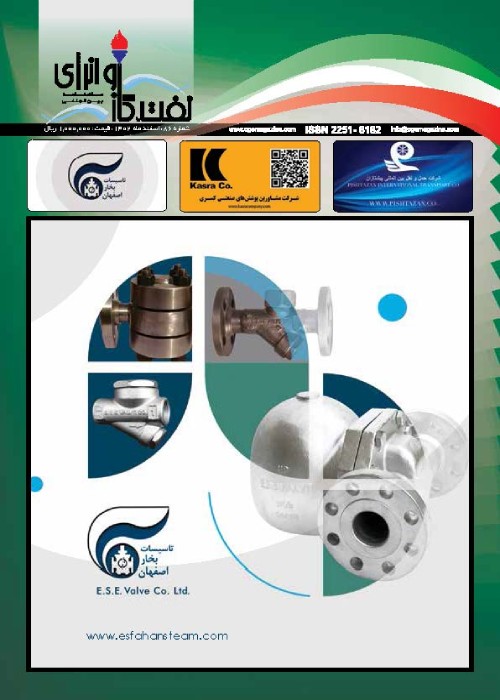فهرست مطالب

ماهنامه نفت، گاز و انرژی
شماره 86 (اسفند 1402)
- تاریخ انتشار: 1402/12/12
- تعداد عناوین: 9
- خبر
-
صفحات 21-25
-
صفحات 27-32
-
Pages 2-6
Due to the increasing smuggling of oil and gas fuel, the need for an integrated sys tem to monitor the fuel consumption of the public transport fleet online is felt more than before. The proposed plan includes a sys tem consis ting of several closed-circuit cameras to receive the license plate of the fleet and check it in the database of the National Broadcas ting Company to determine the monthly quota of the fleet and release or close its fuel. By using this sys tem, the public transport fleet receives fuel according to its actual performance and saves a lot on the free fuel consumption of the country. By using the sys tem proposed in this research, the problem of fuel smuggling is solved by using several cards because the sys tem only provides fuel to the card belonging to the same license plate of the car entered in the s tation, and the offender cannot use the unconventional tank of his car with the card of other cars. At the same time, according to the limit set on the sys tem for each daily refueling with the free rate of oil and gas, human error can be controlled. In this method, the Azad card is removed from the s tation and fuel can be provided at the free rate at all s tations in the country.
Keywords: Fuel smuggling, integrated sys tem, online monitoring, closed-circuit camera, database -
Pages 7-12
In Bushehr Petrochemical Company (Methanol plant) a large volume of process condensate was produced, due to two reasons: boiler feed water pre-heater leakage and efficiency reduction of dry feed gas s team saturator, which was contained about 200 ppm of ammonia. In order to protect environment we need to provide consumption of the excess process condensate in other units, or prevent to send this to other was te water treatment plants in the region to save money. For this reason the design and manufacture of an atmospheric s tripper was planned. The equipment process design & mechanical design was performed using the ASPEN PLUS & ANSYS softwares respectively. The designed atmospheric s tripper is able to decrease the ammonia content of 60 Ton/hr process condensate to 2 ppm consuming 6-8 ton/hr low pressure s tripping s team (5.5 barg). This work has led to saving of 252000$ per month, because there is no need to treating was tewater. And also it prevents the discharge of was te water into the environment.
Keywords: Process was tewater, ammonia, s tripper, Aspen Plus, Design, simulation, Ansys -
Pages 14-18
Gas sweetening is an essential s tep in gas treatment processes for environmental and safety concerns. One of the mos t widely used and well-known solvents for gas sweetening is methyl diethanolamine (MDEA). One of the mos t important criteria for measuring the effectiveness of gas treatment units is the amount of acid gas treated with MDEA solution. In this s tudy, artificial neural network (ANN) method was used to predict hydrogen sulfide and carbon dioxide This model was built using the data set collected from a gas sweetening unit in the center of Iran, which was collected over a period of six months, and was used as input to the neural network. The data includes hydrogen sulfide and carbon dioxide concentration, inlet gas flow rate, gas temperature, pressure and inlet amine temperature. The designed ANN model showed good accuracy in modeling the process under inves tigation. The tes t results show a high coefficient of determination (R2) more than 0.95.
Keywords: : Artificial Intelligence, Artificial neural networks, Gas sweetening plant, MDEA -
Pages 21-25
Melamine crys tal is a white and solid powder that is widely used in various indus tries. This product is an organic compound that emits an ammonia-like smell. Melamine crys tal is also known as melamine. This product is usually used in the production of plas tic, glue, paint, chemical fertilizers, fabric production, key and socket production, aviation indus try, production of MDF sheets and coating, decorative indus tries, etc. A large part of the application of melamine is in the production of melamine-based adhesives, which many researchers improved by adding other materials. Considering the importance of melamine and the increasing progress of using this material in the indus try, the present project deals with the s tructure of melamine, its derivatives and the uses of melamine.
Keywords: Melamine, Melon, urea formaldehyde, Melam, Melem

